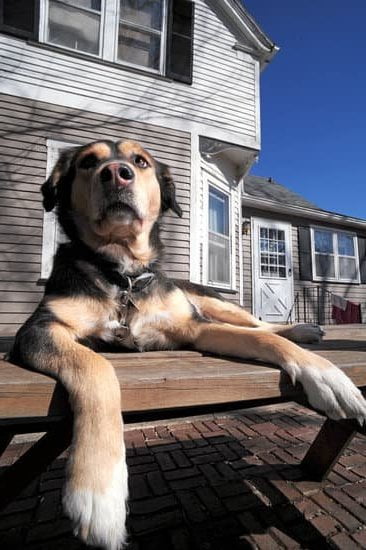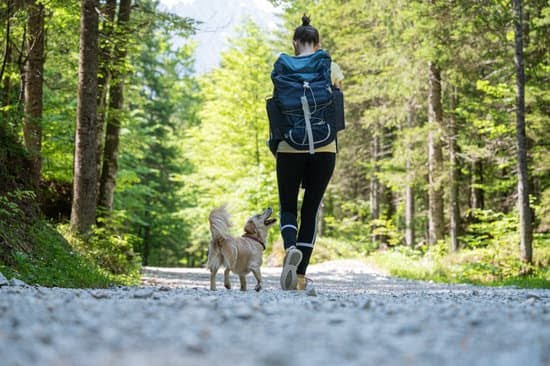Are male dogs hard to potty train? This question is a common concern for many pet owners, especially those who are taking on the task of training a new puppy or adult dog.
In this article, we will delve into the myths and truths surrounding potty training male dogs. From understanding how different breeds may require different training methods to exploring the challenges of training puppies versus adult male dogs, we will provide insights and practical tips for successfully potty training your furry friend.
One of the most common misconceptions about potty training male dogs is that they are inherently more difficult to train than females. However, the truth is that with the right approach and consistency, male dogs can be successfully potty trained just like their female counterparts. Understanding the unique needs and behaviors of male dogs is crucial in effective potty training, which we will explore in more detail throughout this article.
Additionally, we will also discuss the importance of consistency in potty training and how establishing a regular routine can greatly impact your dog’s progress. By addressing common mistakes in potty training and providing practical solutions for pet owners, we aim to equip readers with the knowledge and tools necessary to overcome any challenges they may face in potty training their male dogs.
So, if you’ve ever wondered whether male dogs are hard to potty train, keep reading as we uncover valuable insights and strategies for successful potty training.
Understanding the Breed
When it comes to potty training male dogs, understanding the breed is crucial. Different breeds may have different temperaments and levels of stubbornness, which can impact the potty training process. For example, terriers are known for their independent nature and may require more patience and consistency during the training process. On the other hand, retrievers are often eager to please and may pick up on potty training cues more quickly.
Breed-Specific Training Methods
It’s important for pet owners to research their dog’s breed characteristics before starting the potty training process. Some breeds may respond better to crate training, while others may need more frequent trips outside due to their smaller bladder capacity. Understanding the specific needs of your dog’s breed will help tailor the potty training method to be more effective.
Professional Assistance
In some cases, seeking professional assistance from a dog trainer or behaviorist may be beneficial, especially for first-time pet owners or individuals struggling with difficult-to-train breeds. These professionals can provide specialized insights and techniques for potty training male dogs based on their breed characteristics.
Persistence and Patience
No matter the breed, successful potty training requires persistence and patience. Consistency in training methods is key, regardless of whether you have a toy breed or a working breed. By understanding your dog’s specific breed traits and responding accordingly, you can set yourself up for success in potty training your male dog.
The Role of Age in Potty Training
Potty training male dogs can pose different challenges depending on their age. Puppies and adult male dogs may require different approaches and understanding these differences can help pet owners successfully train their furry companions.
Puppies
Potty training a puppy requires patience, consistency, and a watchful eye. Puppies have smaller bladders and less control over their bodily functions, making accidents more common. It’s important to take puppies outside frequently, especially after meals, naps, playtime, or any excitement. Positive reinforcement is key when potty training puppies – they respond well to praise and treats when they eliminate in the appropriate area.
Adult Male Dogs
Training adult male dogs may present different challenges compared to puppies. While they may have better bladder control, adult male dogs could have developed bad habits or behavioral issues that impact their potty training. It’s crucial for pet owners to be patient and understanding as they work with an adult dog on potty training. Understanding the dog’s previous experiences and behaviors can provide insight into their potty training needs.
Transitional Period
For rescue dogs or older puppies transitioning into adulthood, there may be a combination of challenges from both puppyhood and adulthood. They may need time to adjust to a new environment and routine, which can impact their potty training progress. In these cases, it’s important for pet owners to show compassion and provide consistent guidance as the dog adapts to their new home.
Understanding the unique challenges of potty training at different stages of a dog’s life can prepare pet owners for success in training their male canine companions. By tailoring approaches based on age-specific needs, pet owners can create effective potty training routines that suit the individual needs of their dogs.
Behavioral Differences Between Male and Female Dogs
When it comes to potty training, it’s important to understand the natural inclinations of male and female dogs, as these can have a significant impact on the training process. Male dogs, for example, may be more prone to marking their territory with urine compared to females. This behavior is instinctual and can pose a challenge when potty training male dogs. Understanding these natural inclinations can help pet owners develop effective strategies for successful potty training.
Additionally, male dogs may be more easily distracted during potty training due to their curiosity and desire to explore their surroundings. This means that pet owners may need to be patient and consistent in reinforcing good potty habits with male dogs. On the other hand, female dogs may be more focused and attentive during the potty training process, making them easier to train in some cases.
It’s also important to note that certain breeds may exhibit specific behavioral differences when it comes to potty training. For example, smaller breeds may have faster metabolisms and smaller bladders, requiring more frequent trips outside for potty breaks. Understanding these breed-specific differences can help pet owners tailor their potty training methods to suit the needs of their male dogs.
| Male Dogs | Female Dogs |
|---|---|
| More prone to marking behavior | Less likely to engage in marking behavior |
| Easily distracted during potty training | May be more focused and attentive during potty training |
| May require tailored potty training based on breed-specific differences | Breed-specific differences in potty training needs also important |
The Importance of Consistency in Potty Training
Potty training a male dog requires consistency and patience. By establishing a consistent routine, you can help your furry friend understand where and when they should relieve themselves. Here are some tips for creating a consistent potty training routine:
- Set a schedule: Take your male dog outside to potty at the same times every day, such as first thing in the morning, after meals, and before bedtime.
- Choose a designated potty area: Designate a specific spot in your yard where you want your dog to go to the bathroom. This will help them understand where they should be doing their business.
- Use positive reinforcement: When your male dog goes potty in the designated area, be sure to praise and reward them with treats. This positive reinforcement will encourage them to continue going in the right spot.
Consistency is key when it comes to potty training any dog, but it is especially important when training male dogs due to their natural marking behavior. By following these tips for creating a consistent routine, you can help set your male dog up for potty training success.
Remember that every dog is different, so be patient and stay consistent with your training efforts. With time and persistence, your male dog will learn where and when it’s appropriate to go potty.
Addressing Marking Behavior in Male Dogs
Male dogs are known for their tendency to mark their territory by urinating on vertical surfaces, such as walls and furniture. This behavior is a natural instinct for male dogs, especially when they reach sexual maturity. It’s important for pet owners to understand the difference between marking behavior and potty accidents when potty training their male dogs. While both involve urination, they serve different purposes and require different approaches in training.
Marking behavior is a deliberate and intentional act by male dogs to communicate their presence and assert dominance in their surroundings. It is not related to bladder control or the need to relieve themselves. On the other hand, potty accidents occur when a dog urinates indoors due to a lack of proper training, medical issues, or anxiety. Distinguishing between these behaviors is crucial in addressing potty training challenges with male dogs.
One effective way to differentiate marking from potty accidents is by observing the circumstances surrounding the urination. If a dog repeatedly urinates in specific areas of the house, particularly vertical surfaces or objects, it is likely marking behavior.
However, if the urination occurs randomly throughout the house without any pattern or purpose, it may indicate a potty accident. By understanding these distinctions, pet owners can tailor their training methods accordingly and address specific issues related to marking behavior or potty accidents.
| Marking Behavior | Potty Accidents |
|---|---|
| Deliberate and intentional | Unintentional and lack of bladder control |
| Communicates presence and dominance | Related to insufficient training or medical issues |
| Occurs in specific areas of the house | Randomly happens throughout the house |
Common Mistakes in Potty Training Male Dogs
When potty training male dogs, pet owners may encounter common mistakes that can hinder the training process. By identifying and avoiding these key mistakes, pet owners can create a successful potty training routine for their male dogs.
Some common mistakes in potty training male dogs include:
1. Inconsistent schedule: Failing to establish a consistent routine for potty breaks can confuse male dogs and make it challenging for them to understand when and where they should go potty.
2. Punishing accidents: Punishing a male dog for having accidents indoors can lead to fear or anxiety, which can make the potty training process even more difficult.
3. Not supervising effectively: Without proper supervision, it’s easy to miss opportunities to guide male dogs to the appropriate potty area, leading to more accidents indoors.
To avoid these key mistakes in the training process, pet owners can take proactive steps such as:
– Establishing a consistent potty schedule: Creating a routine for regular potty breaks will help male dogs understand when it’s time to go outside.
– Using positive reinforcement: Rewarding good behavior with treats and praise can encourage male dogs to continue using the designated potty area.
– Supervising attentively: Keeping a close eye on male dogs, especially during key times such as after meals or waking up from naps, can help prevent indoor accidents.
By identifying and avoiding these common mistakes, pet owners can pave the way for successful potty training for their male dogs. It’s important to remember that every dog is unique, so patience and consistency are key in the potty training process.
Solutions and Tips for Successfully Potty Training Male Dogs
In conclusion, potty training male dogs may present its own unique set of challenges, but with the right approach and understanding, it can be successfully accomplished. Understanding the breed of your male dog is crucial as different breeds may require different potty training methods. Additionally, considering the age of the dog is important, as training a puppy will differ from training an adult male dog.
Consistency is key in potty training male dogs. Establishing a routine and sticking to it will help reinforce good behavior. It’s also important to address marking behavior separately from potty accidents, as they stem from different motivations. By understanding the difference, pet owners can better address and correct negative behaviors.
Finally, it’s essential for pet owners to be aware of common mistakes in potty training and actively work to avoid them. With patience, consistency, and positive reinforcement, pet owners can successfully potty train their male dogs and create a happy and healthy environment for their beloved pets. Remember that every dog is unique, so it’s important for pet owners to tailor their training approach to fit the specific needs and behaviors of their individual dog.
Frequently Asked Questions
How Long Does It Take to Potty Train a Male Dog?
The time it takes to potty train a male dog can vary depending on the breed, age, and individual personality of the dog. On average, it can take anywhere from a few weeks to several months to fully potty train a male dog. Consistency, positive reinforcement, and patience are key factors in successfully potty training a male dog.
What Is the Hardest Dog to Potty Train?
While all dogs have their own unique challenges when it comes to potty training, some breeds are often considered more stubborn or difficult to potty train than others. Breeds such as Dachshunds, Basset Hounds, and Bulldogs are commonly cited as being among the hardest to potty train due to their independent nature and strong-willed personalities.
However, with the right approach and dedication, any dog can be successfully potty trained.
Are Neutered Dogs Easier to Potty Train?
Neutering can potentially make the process of potty training easier for dogs. Neutered dogs may exhibit less marking behavior indoors and have fewer hormonal influences that can affect their ability to control their bladder.
However, it’s important to note that neutering alone is not a guarantee of easier potty training and that proper training techniques and consistency are still essential for success in teaching a dog where and when to go potty.

Welcome to the blog! I am a professional dog trainer and have been working with dogs for many years. In this blog, I will be discussing various topics related to dog training, including tips, tricks, and advice. I hope you find this information helpful and informative. Thanks for reading!





